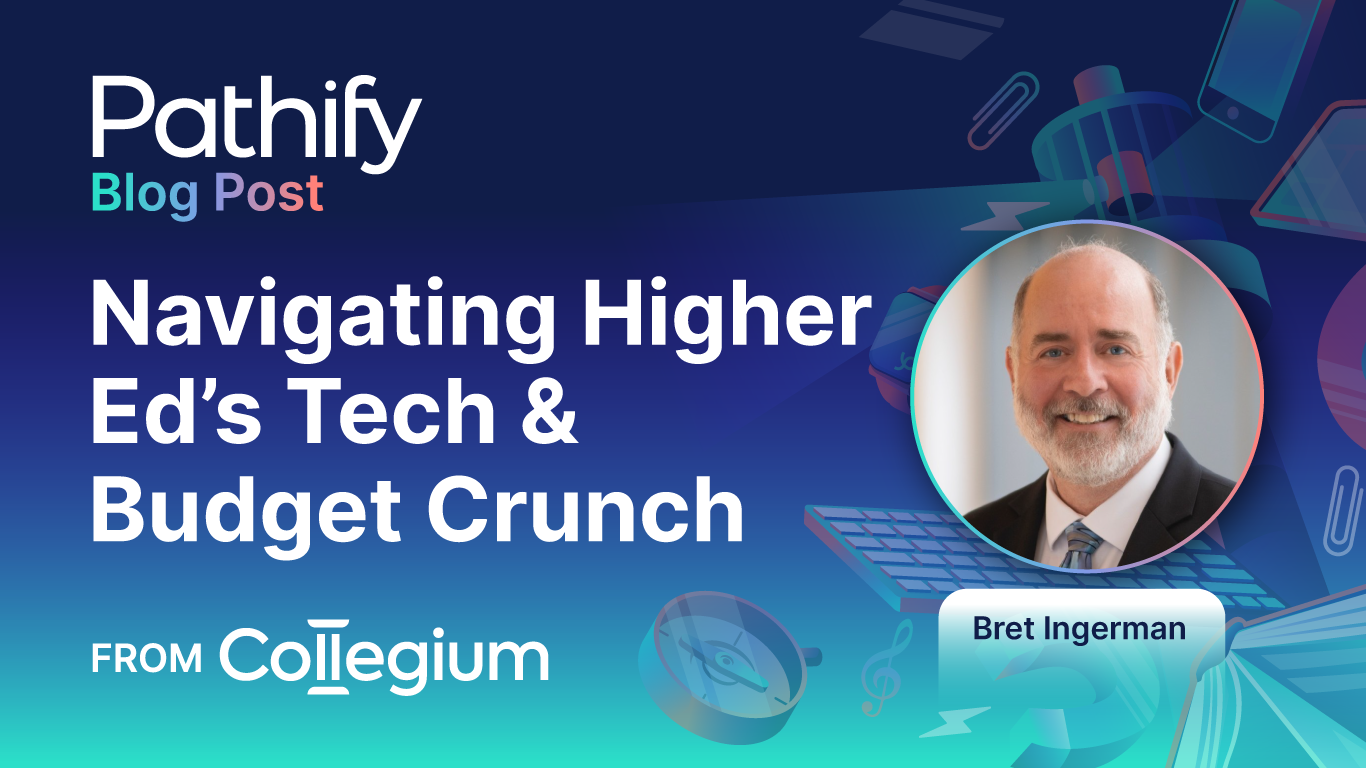Yes, it is survivable
Working in higher education today feels like navigating a continuous obstacle course — with challenges, dilemmas and conundrums forcing us to quickly change and adapt. We regularly face simple challenges, like securing buy-in or obtaining additional funding for projects. Although we handle dilemmas better, they’re more complex. The proverbial fork in the road challenges us with decisions such as choosing between product A and product B within a limited budget. Conundrums go beyond challenges and dilemmas — they represent situations most of us would rather avoid. Conundrums are so intricate and daunting, finding a solution seems impossible.
Budget constraints, exacerbated by declining enrollments, are the root of many IT issues — and they are worsening. With private, non-profit institutions deriving nearly 20% of their revenue from tuition and fees (and public institutions not far behind at 16%), declining enrollments shrink revenue sources, significantly impacting operating budgets and causing many institutions to close their doors altogether. As institutions navigate a challenging future, they face increasing financial conundrums, where making tough choices — especially regarding technology investments — is crucial.
Increasing Infrastructure Costs
Most of higher ed’s tech infrastructure remains fairly independent of enrollment, a sunk cost if you will. Essential infrastructure, such as wired and wireless networks, and mission critical software like the Enterprise Resource Planning (ERP) and Learning Management System (LMS), incur significant base costs regardless of student headcount.
Inflation drives up software licensing costs and the cost of replacing aging hardware, making it more expensive to do the same things we did yesterday. Budget reductions or freezes, partly due to declining enrollments, further strain our finances. We need to allocate an increasing portion of our budget just to maintain core services. Yet we can’t just maintain — institutions must continue investing in new technologies to meet needs and achieve goals.
The Balancing Act
Consider data security. Many institutions must invest in additional technologies to strengthen their infrastructure and secure their data — and these investments are no longer optional. New federal regulations require institutions to make these additional (and usually unfunded) investments.
As we struggle in keeping up with the increasing costs of essential services, we now face the additional dilemma of finding funds for new requirements. However, we’ve dealt with this before, and you, your leadership and your institution will make the necessary decisions to focus on what’s essential while keeping expenses within budget. Yet, we face an even more difficult conundrum regarding funding.
Rethinking IT Investment Strategies
Technology does not stand still — new advancements regularly shape how faculty teach, students learn and administrators work. While it’s often wise to observe emerging technologies from a distance before diving in, some innovations demand immediate attention. Once confined to labs, artificial intelligence (AI) and generative AI (GenAI) quickly became game changers, promising both transformative benefits and potential challenges.
And here we face the thorniest conundrum of all — how we manage rising costs for essential systems, invest in critical security technologies and explore cutting-edge advancements, while budgets stagnate or shrink. It may seem like an “either/or” choice between these competing priorities but let me be clear — it’s not.
We must intentionally invest in systems that readily integrate with others, ensuring the entire tech stack exceeds the sum of its parts. We must also be creative by prioritizing investments in systems that benefit the entire institution, not just one area. By combining intentionality and creativity, we achieve a “both/and” approach, allowing us to fund both essential needs and desired outcomes.
New Perspectives & Approaches
At Tallahassee State College (TSC), Pathify helped us achieve our “both/and” reality. Pathify’s Engagement Hub readily and easily integrated with a variety of our other software solutions, allowing students to access all essential information — emails, schedules, assignments and more — within a unified interface.
Pathify also allowed us to reduce the number of products within our technology portfolio, many of which met a single need for a specific area or offered overlapping features. Pathify’s connective integrations and features enables institutions to replace a number of end user UX and engagement solutions — such as the student portal, campus mobile app, employee intranet, events and activities solutions, alumni affinity tools — even a GenAI chatbot.
With Pathify, consolidating departmental-specific systems or applications into one platform streamlined operations, eliminated redundancies, simplified technical support and freed up much needed budget.
Chipping Away at the Conundrum
While evolving technology might cause conundrums, it also offers solutions. As higher education institutions face mounting challenges and rising costs for maintaining essential systems, alongside the need for new security measures and innovations, they must rethink their technology investments. The situation demands a shift from “either/or” thinking to a more integrated, “both/and” framework, embracing both intentionality and creativity.
Solutions like Pathify seamlessly integrate with existing systems, providing new features for use across campus, while simplifying student interactions. By thoughtfully adopting intentional and creative solutions, we can confidently navigate this complex landscape and thrive, despite increased constraints and demands. Embracing this new approach transforms challenges into opportunities, dilemmas into strategic choices and conundrums into pathways for innovation.
- “Colleges Were Already Bracing for an ‘Enrollment Cliff.’ Now There Might Be a Second One.” https://www.chronicle.com/article/colleges-were-already-bracing-for-an-enrollment-cliff-now-there-might-be-a-second-one
- “Post Secondary Institution Revenues” National Center for Education Statistics (data updated as of August 2023. https://nces.ed.gov/programs/coe/indicator/cud/postsecondary-institution-revenue
- “Why Do Colleges Close?” U.S. News and World Reports, February, 2024. https://www.usnews.com/education/articles/why-do-colleges-close
About the Author
Bret Ingerman is the former Vice President for Information Technology at Tallahassee State College, where he led the institution’s technology vision and strategy for over a decade. Previously, he held multiple, executive-level technology roles at Vassar College, Skidmore College, Lewis & Clark College and Syracuse University, managing tech infrastructures across both software and hardware. Originally from New York City, Bret holds an M.S. and B.S. in Psychology from Syracuse University. Now retired and embracing the stereotypical retiree lifestyle in Florida, he enjoys mentoring at-risk youth, playing his trumpet in local bands and serving as a BBQ judge.
